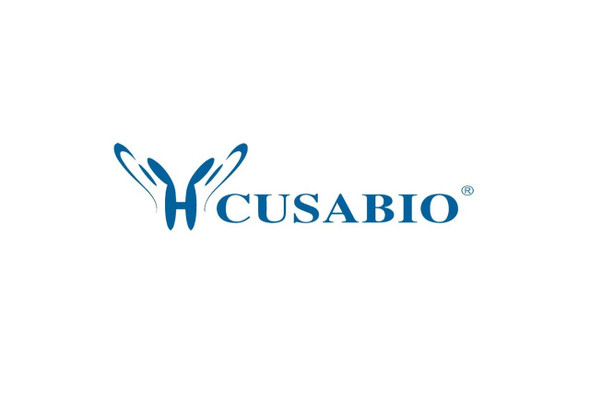Cusabio Human Recombinants
Recombinant Human NADPH oxidase 4 (NOX4), partial | CSB-EP015961HU1
- SKU:
- CSB-EP015961HU1
- Availability:
- 3 - 7 Working Days
Description
Recombinant Human NADPH oxidase 4 (NOX4), partial | CSB-EP015961HU1 | Cusabio
Alternative Name(s): Kidney oxidase-1 Short name: KOX-1 Kidney superoxide-producing NADPH oxidase Renal NAD(P)H-oxidase RENOX
Gene Names: NOX4
Research Areas: Cardiovascular
Organism: Homo sapiens (Human)
AA Sequence: GGLLKYQTNLDTHPPGCISLNRTSSQNISLPEYFSEHFHEPFPEGFSKPAEFTQHKFVKICMEEPRFQANFPQTWLWISGPLCLYCAERLYRYIRSNKPVTIISVMSHPSDVMEIRMVKENFKARPGQYITLHCPSVSALENHPFTLTMCPTETKATFGVHLKIVGDWTERFRDLLLPPSSQDSEILPFIQSRNYPKLYIDGPFGSPFEESLNYE
Source: E.coli
Tag Info: N-terminal 6xHis-tagged
Expression Region: 210-424aa
Sequence Info: Partial
MW: 28.8 kDa
Purity: Greater than 85% as determined by SDS-PAGE.
Relevance: Constitutive NADPH oxidase which generates superoxide intracellularly upon formation of a complex with CYBA/p22phox. Regulates signaling cascades probably through phosphatases inhibition. May function as an oxygen sensor regulating the KCNK3/TASK-1 potassium channel and HIF1A activity. May regulate insulin signaling cascade. May play a role in apoptosis, bone resorption and lipolysaccharide-mediated activation of NFKB. May produce superoxide in the nucleus and play a role in regulating gene expression upon cell stimulation. Isoform 3 is not functional. Isoform 5 and isoform 6 display reduced activity. Isoform 4: Involved in redox signaling in vascular cells. Constitutively and NADPH-dependently generates reactive oxygen species (ROS). Modulates the nuclear activation of ERK1/2 and the ELK1 transcription factor, and is capable of inducing nuclear DNA damage. Displays an increased activity relative to isoform 1.
Reference: "Identification of novel Nox4 splice variants with impact on ROS levels in A549 cells." Goyal P., Weissmann N., Rose F., Grimminger F., Schaefers H.J., Seeger W., Haenze J. Biochem. Biophys. Res. Commun. 329:32-39(2005)
Storage: The shelf life is related to many factors, storage state, buffer ingredients, storage temperature and the stability of the protein itself. Generally, the shelf life of liquid form is 6 months at -20?/-80?. The shelf life of lyophilized form is 12 months at -20?/-80?.
Notes: Repeated freezing and thawing is not recommended. Store working aliquots at 4? for up to one week.
Function: Constitutive NADPH oxidase which generates superoxide intracellularly upon formation of a complex with CYBA/p22phox. Regulates signaling cascades probably through phosphatases inhibition. May function as an oxygen sensor regulating the KCNK3/TASK-1 potassium channel and HIF1A activity. May regulate insulin signaling cascade. May play a role in apoptosis, bone resorption and lipolysaccharide-mediated activation of NFKB. May produce superoxide in the nucleus and play a role in regulating gene expression upon cell stimulation. Isoform 3 is not functional. Isoform 5 and isoform 6 display reduced activity.; FUNCTION
Involvement in disease:
Subcellular Location: Endoplasmic reticulum membrane, Multi-pass membrane protein, Cell membrane, Multi-pass membrane protein, Cell junction, focal adhesion
Protein Families:
Tissue Specificity: Expressed by distal tubular cells in kidney cortex and in endothelial cells (at protein level). Widely expressed. Strongly expressed in kidney and to a lower extent in heart, adipocytes, hepatoma, endothelial cells, skeletal muscle, brain, several brain tumor cell lines and airway epithelial cells.
Paythway: LipidsandInflammation inAtherogenesis
Form: Liquid or Lyophilized powder
Buffer: If the delivery form is liquid, the default storage buffer is Tris/PBS-based buffer, 5%-50% glycerol. If the delivery form is lyophilized powder, the buffer before lyophilization is Tris/PBS-based buffer, 6% Trehalose, pH 8.0.
Reconstitution: We recommend that this vial be briefly centrifuged prior to opening to bring the contents to the bottom. Please reconstitute protein in deionized sterile water to a concentration of 0.1-1.0 mg/mL.We recommend to add 5-50% of glycerol (final concentration) and aliquot for long-term storage at -20?/-80?. Our default final concentration of glycerol is 50%. Customers could use it as reference.
Uniprot ID: Q9NPH5
HGNC Database Link: HGNC
UniGene Database Link: UniGene
KEGG Database Link: KEGG
STRING Database Link: STRING
OMIM Database Link: OMIM









